A couple of weeks ago the parties aligned with the People’s Republic of China (PRC), the Chinese Nationalist Party (KMT) and the Taiwan People’s Party (TPP), voted in the legislature to eliminate the subsidy that enables Taiwan Power Co (Taipower) to keep up with its burgeoning debt, and instead pay for universal cash handouts worth NT$10,000. The subsidy would have been NT$100 billion, while the cash handout had a budget of NT$235 billion. The bill mandates that the cash payments must be completed by Oct. 31 of this year. The changes were part of the overall NT$545 billion budget approved by the pro-PRC parties.
The cash handout gives every appearance of being vote-buying for the recall campaign. As I traveled around Taiwan last week, I photographed many signs for local KMT politicians that did not display the party logo. Clearly the KMT felt nervous.
TAIPOWER SUBSIDY

Photo: TT file photo
More interesting than the sordid spectacle of the allegedly conservative party creating more government debt to buy votes was the elimination of the Taipower subsidy. The subsidy itself has become an annual ritual, usually passed in the fall, as Taipower has piled up enormous debts by keeping electricity prices too low. Like most government subsidies, it exists to prevent meaningful system change by giving the appearance that something is being done.
Democratic Progressive Party (DPP) Premier Cho Jung-tai (卓榮泰) said that the pro-PRC parties have rejected or cut Cabinet proposals for supplementary budgets, general budgets and three separate acts to support Taipower. In other words, the attack is not limited merely to the subsidy, but to the whole idea of fixing Taipower. Cho said that the government would use its budgets to support Taipower.
That last statement reveals the purpose of the KMT and the TPP in killing the Taipower subsidy: it forces the government to make cuts elsewhere. When the public experiences the reduction in services, it will blame the DPP. It may also force the government to raise electricity prices, which the DPP will also take the blame for. Indeed, during the debates over the Taipower subsidy the government sensibly would not commit to freezing electricity prices.

Photo courtesy of the National Park Service
The elimination of the Taipower subsidy recalls the moment in March of 2016 when, just before the DPP’s Tsai Ing-wen (蔡英文) became president, the KMT government cut electricity prices by 9.5 percent, then the largest cut ever. The government claimed that the international fuel price situation made that possible. Yet it had a chance to clear some of Taipower’s debt, already enormous at that time, simply by not moving electricity prices.
The purpose of the March 2016 rate cut was obvious: with Taipower’s debts rising, the DPP would be forced at some point to raise electricity prices, incurring public wrath, and the anger of businesses addicted to low electricity prices. The pressure of the debt is a useful political tool against the DPP. The DPP must deliver good governance if Taiwan is to remain free. The KMT is not so constrained.
As political scientist Kharis Templeman noted at the time, low electricity prices drive demand for cheap nuclear power. They also, as I observed, reduce support for investments in renewables. They are also a sop to the zombie businesses (read: traditional industries) dependent on the flow of government subsidies to survive.
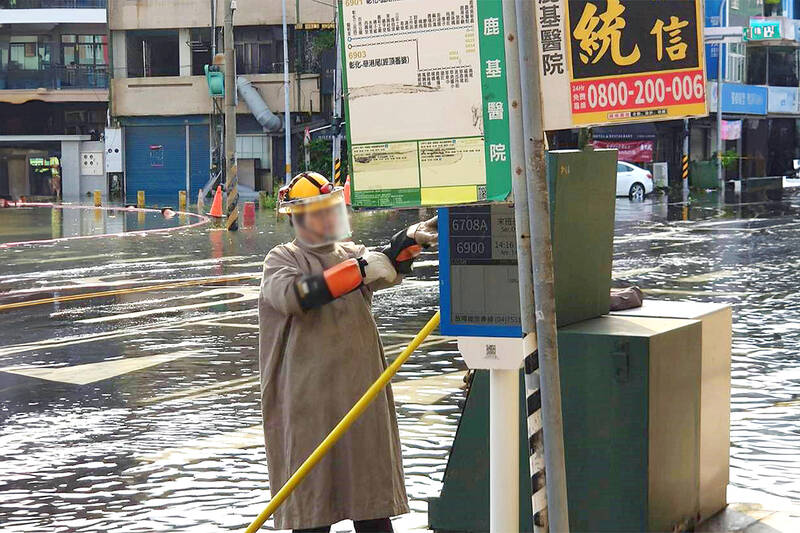
Photo courtesy of Changhua Christian Hospital
Thus, economic pressure on Taipower has other effects that may help the KMT. It may further generate support for reviving Taiwan’s dead nuclear plants. Eliminating the subsidy for Taipower may increase the public’s sense of crisis. This works in tandem with Taipower’s sketchy “margin” calculations, which also appear to be designed to increase the sense of crisis, as I wrote in March (“The useless debate over energy,” March 31, 2025). The KMT likely intends the cuts to increase public support for the referendum on re-opening Ma-anshan Nuclear Plant slated for Aug. 23, along with more recalls of KMT politicians. That may in turn increase the turnout of KMT voters.
When the KMT in January proposed these cuts, KMT Caucus Whip Fu Kun-chi (傅?萁), said that the DPP was exploiting taxpayers to subsidize Taipower. He said that DPP policy was driving up electricity prices and forcing firms to relocate. Since removing subsidies could only force electricity prices up, Fu lamely attempted to explain away this contradiction by calling the NT$100 billion subsidy the wrong approach. Naturally he couldn’t say out loud the KMT’s goal was to force the DPP to raise electricity prices and eat the blame.
ANGERING VOTERS
Taipower and its workforce have traditionally been strongly aligned with the KMT, so the cuts, like so many of the other KMT budget cuts and freezes, have angered would-be supporters. Moreover, as Brian Hioe noted in a piece on how public anger is driving the recalls, “targeting Taipower at a time when Taipower workers have been publicly praised for their efforts to restore the power grid after Typhoon Danas left over 900,000 households without power earlier this month may not prove wise.”
KMT officials, notorious in election after election for dismissive and contemptuous comments about the electorate, continued throughout the recall with numerous abusive remarks. Nor have they downplayed their pro-China views. Andrew Hsia (夏立言), the KMT’s vice-chairman, visited the PRC twice this year, in February and again in April, leading delegations of KMT officials. He called for support for the fictional “1992 consensus”, which is unpopular, and averred that Taiwan is part of China. These claims have been echoed by several KMT officials throughout the recall campaign. The public has seen and heard this.
One of the KMT’s most widely circulated talking points is that the recalls are costly, NT$1.62 billion, according to Central Election Commission (CEC) figures (the KMT originally proposed freezing the CEC budget back in January, which DPP officials said was to halt the recalls). Elections are cheap. Budget cuts are expensive, especially to infrastructure and defense programs, which may go on for years. Each time they are slowed or stopped, additional future costs are incurred. Cuts to services simply redistribute costs to individuals or already overwhelmed and underfunded non-profits (felt by many voters). The public may be like the wise men who grasp only their tiny part of the elephant, but they are aware that the budget for the part they are holding has been cut.
I often remark that the KMT is not a political party, but the Leninist political wing of a colonial elite. Never has this been more publicly demonstrated by the KMT than during the recall campaign. Save for some adjustments to the budget cuts, the KMT has behaved throughout this political crisis with unmitigated China-centric paternalism. KMT actions may have sparked the recall movement, but its attitude helps sustain it.
Notes from Central Taiwan is a column written by long-term resident Michael Turton, who provides incisive commentary informed by three decades of living in and writing about his adoptive country. The views expressed here are his own.
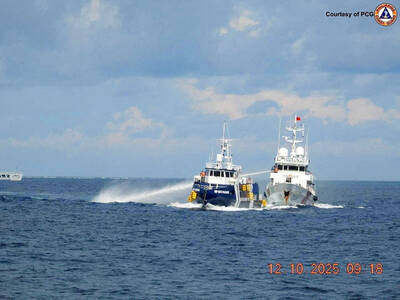
Many people noticed the flood of pro-China propaganda across a number of venues in recent weeks that looks like a coordinated assault on US Taiwan policy. It does look like an effort intended to influence the US before the meeting between US President Donald Trump and Chinese dictator Xi Jinping (習近平) over the weekend. Jennifer Kavanagh’s piece in the New York Times in September appears to be the opening strike of the current campaign. She followed up last week in the Lowy Interpreter, blaming the US for causing the PRC to escalate in the Philippines and Taiwan, saying that as
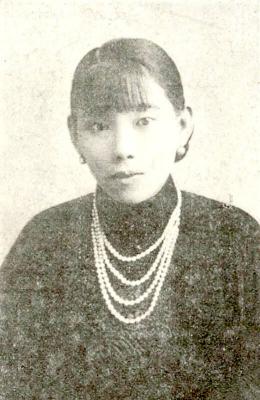
Nov. 3 to Nov. 9 In 1925, 18-year-old Huang Chin-chuan (黃金川) penned the following words: “When will the day of women’s equal rights arrive, so that my talents won’t drift away in the eastern stream?” These were the closing lines to her poem “Female Student” (女學生), which expressed her unwillingness to be confined to traditional female roles and her desire to study and explore the world. Born to a wealthy family on Nov. 5, 1907, Huang was able to study in Japan — a rare privilege for women in her time — and even made a name for herself in the
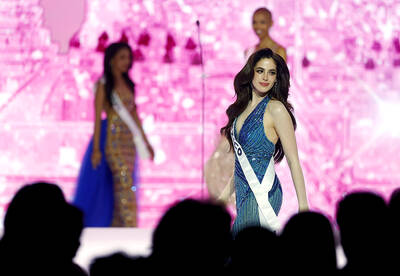
This year’s Miss Universe in Thailand has been marred by ugly drama, with allegations of an insult to a beauty queen’s intellect, a walkout by pageant contestants and a tearful tantrum by the host. More than 120 women from across the world have gathered in Thailand, vying to be crowned Miss Universe in a contest considered one of the “big four” of global beauty pageants. But the runup has been dominated by the off-stage antics of the coiffed contestants and their Thai hosts, escalating into a feminist firestorm drawing the attention of Mexico’s president. On Tuesday, Mexican delegate Fatima Bosch staged a
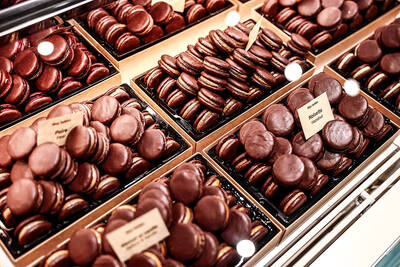
Would you eat lab-grown chocolate? I requested a sample from California Cultured, a Sacramento-based company. Its chocolate, not yet commercially available, is made with techniques that have previously been used to synthesize other bioactive products like certain plant-derived pharmaceuticals for commercial sale. A few days later, it arrives. The morsel, barely bigger than a coffee bean, is supposed to be the flavor equivalent of a 70 percent to 80 percent dark chocolate. I tear open its sealed packet and a chocolatey aroma escapes — so far, so good. I pop it in my mouth. Slightly waxy and distinctly bitter, it boasts those bright,